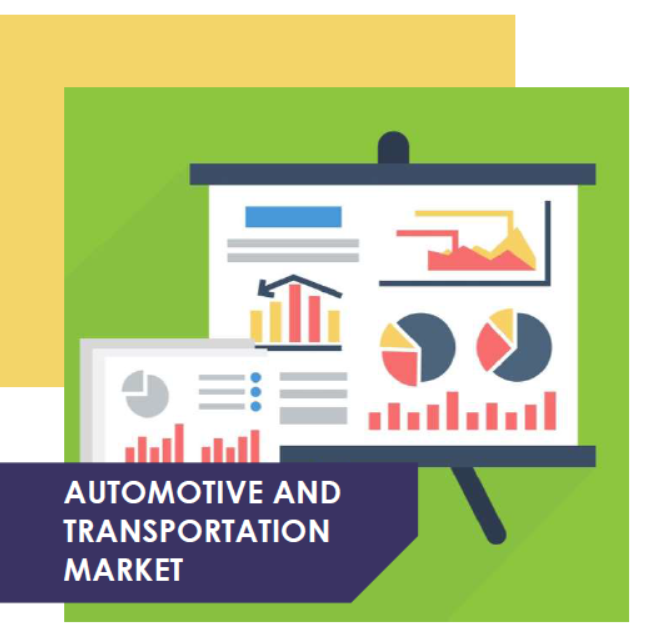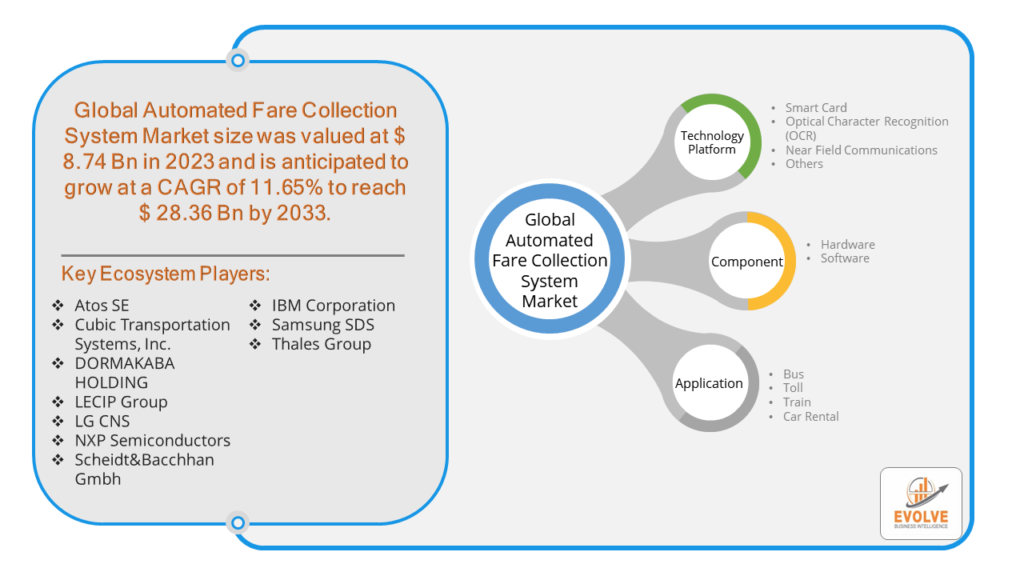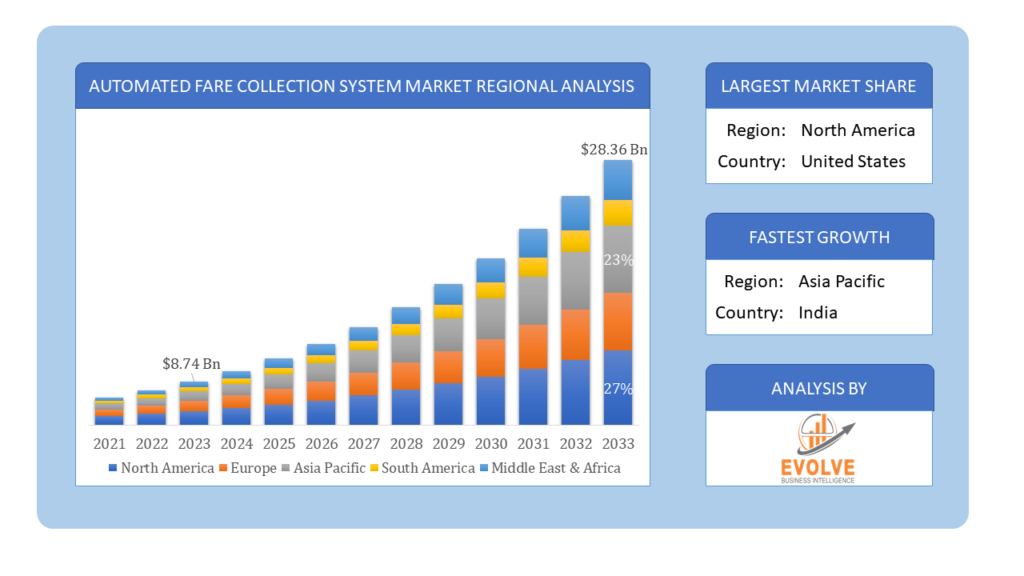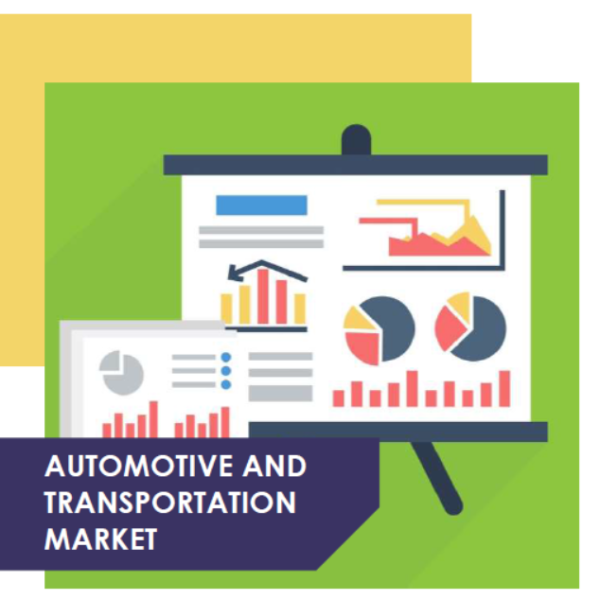Automated Fare Collection System Market Analysis and Global Forecast 2023-2033
$ 1,390.00 – $ 5,520.00Price range: $ 1,390.00 through $ 5,520.00
Automated Fare Collection System Market Research Report: By Technology Platform (Smart Card, Optical Character Recognition (OCR), Near Field Communications, Others), By Component (Hardware, Software), By Application (Bus, Toll, Train, Car Rental), and by Region — Forecast till 2033.
Page: 108
Automated Fare Collection System Market Overview
The Automated Fare Collection System Market Size is expected to reach USD 28.36 Billion by 2033. The Automated Fare Collection System industry size accounted for USD 8.74 Billion in 2023 and is expected to expand at a compound annual growth rate (CAGR) of 11.65% from 2023 to 2033. The Automated Fare Collection (AFC) System market encompasses the technology and solutions used for automating ticketing and fare management in public transportation. This includes hardware such as ticket vending machines, turnstiles, and card readers, as well as software for processing payments and managing fare policies. AFC systems aim to improve efficiency, reduce operational costs, and enhance the passenger experience by providing seamless, cashless transactions. The market is driven by increasing urbanization, advancements in transportation infrastructure, and the growing adoption of smart city initiatives. Key sectors include metro systems, buses, and railways.
Global Automated Fare Collection System Market Synopsis
The COVID-19 pandemic has led to supply chain disruptions leading to supply shortages or lower demand in the Automated Fare Collection System market. The travel restrictions and social-distancing measures have resulted in a sharp drop in consumer and business spending and this pattern is to continue for some time. The end-user trend and preferences have changed due to the pandemic and have resulted in manufacturers, developers, and service providers adopting various strategies to stabilize the company.
Global Automated Fare Collection System Market Dynamics
The major factors that have impacted the growth of Automated Fare Collection System are as follows:
Drivers:
⮚ Technological Advancements
Innovations in technology, such as contactless payments, mobile ticketing, and near-field communication (NFC), have revolutionized fare collection. These advancements provide passengers with convenient and fast payment options, enhancing their overall travel experience and encouraging the adoption of AFC systems.
Restraint:
- Cybersecurity and Privacy Concerns
AFC systems handle a significant amount of sensitive data, including personal information and financial transactions. The risk of cyberattacks, data breaches, and identity theft poses a serious threat. Ensuring robust cybersecurity measures and compliance with data protection regulations is essential but can be complex and costly.
Opportunity:
⮚ Advancements in Payment Technologies
The adoption of new payment technologies such as mobile wallets, contactless cards, and biometric payments opens up opportunities for AFC systems to offer more convenient and secure payment options. Integrating these technologies can attract more users by providing a frictionless payment experience.
Automated Fare Collection System Market Segment Overview
By Technology Platform
Based on the Technology Platform, the market is segmented based on Smart Card, Optical Character Recognition (OCR), Near Field Communications, Others. The Smart Card segment dominates due to its widespread adoption for secure, efficient, and contactless fare transactions in public transportation systems.
By Component
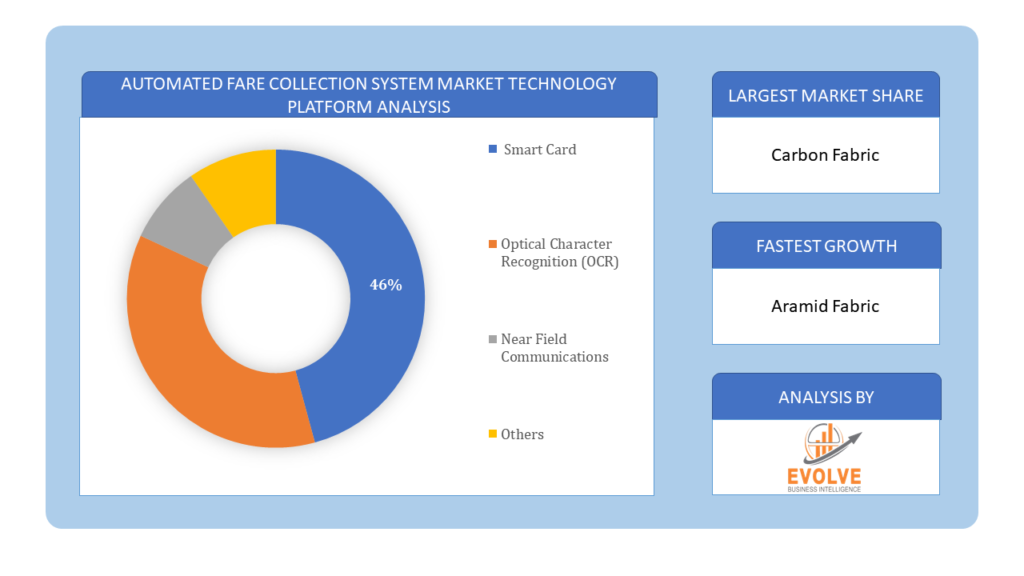 Based on the Component, the market has been divided into Hardware, Software. The hardware segment dominates due to the extensive need for physical infrastructure like ticket vending machines, turnstiles, and card readers essential for fare collection operations.
Based on the Component, the market has been divided into Hardware, Software. The hardware segment dominates due to the extensive need for physical infrastructure like ticket vending machines, turnstiles, and card readers essential for fare collection operations.
By Application
Based on Application, the market has been divided into Bus, Toll, Train, Car Rental. The bus and train segments dominate due to the high volume of daily commuters and the need for efficient fare management in these public transportation modes.
Global Automated Fare Collection System Market Regional Analysis
Based on region, the market has been divided into North America, Europe, Asia-Pacific, the Middle East & Africa, and Latin America. The area of North America is anticipated to dominate the market for the usage of Automated Fare Collection System, followed by those in Asia-Pacific and Europe.
 Automated Fare Collection System North America Market
Automated Fare Collection System North America Market
North America dominates the Automated Fare Collection System market due to several factors. In North America, the Automated Fare Collection (AFC) System market is driven by the region’s advanced transportation infrastructure and high adoption rate of new technologies. Major cities in the United States and Canada have increasingly implemented AFC systems to enhance the efficiency of their public transit networks. Government initiatives promoting smart city projects and investments in modernizing public transportation contribute significantly to market growth. Additionally, the presence of key market players and ongoing technological advancements in payment solutions and data analytics further bolster the market in this region. The focus on improving commuter experience and operational efficiency continues to drive the expansion of AFC systems across North America.
Automated Fare Collection System Asia Pacific Market
The Asia-Pacific region has been witnessing remarkable growth in recent years. In the Asia Pacific region, the Automated Fare Collection (AFC) System market is experiencing rapid growth due to significant urbanization and the expansion of public transportation networks in countries like China, India, and Japan. Governments are heavily investing in smart city initiatives and infrastructure development, driving the adoption of advanced AFC systems. The region’s high population density and increasing demand for efficient, cashless fare collection methods contribute to market expansion. Technological advancements and collaborations between local and international firms are enhancing system capabilities.
Competitive Landscape
The competitive landscape includes key players (tier 1, tier 2, and local) having a presence across the globe. Companies such as Atos SE, Cubic Transportation Systems, Inc., DORMAKABA HOLDING, LECIP Group, and LG CNS are some of the leading players in the global Automated Fare Collection System Industry. These players have adopted partnership, acquisition, expansion, and new product development, among others as their key strategies.
Key Market Players:
- Atos SE
- Cubic Transportation Systems, Inc.
- DORMAKABA HOLDING
- LECIP Group
- LG CNS
- NXP Semiconductors
- Scheidt&Bacchhan Gmbh
- IBM Corporation
- Samsung SDS
- Thales Group
Key development:
In September 2022, IBM Corporation made a key development in the Automated Fare Collection System market by launching an advanced AI-powered payment platform, enhancing the efficiency and security of fare transactions for public transportation systems.
Scope of the Report
Global Automated Fare Collection System Market, by Technology Platform
- Smart Card
- Optical Character Recognition (OCR)
- Near Field Communications
- Others
Global Automated Fare Collection System Market, by Component
- Hardware
- Software
Global Automated Fare Collection System Market, by Application
- Bus
- Toll
- Train
- Car Rental
Global Automated Fare Collection System Market, by Region
- North America
- US
- Canada
- Mexico
- Europe
- UK
- Germany
- France
- Italy
- Spain
- Benelux
- Nordic
- Rest of Europe
- Asia Pacific
- China
- Japan
- South Korea
- Indonesia
- Austalia
- Malaysia
- India
- Rest of Asia Pacific
- South America
- Brazil
- Argentina
- Rest of South America
- Middle East & Africa
- Saudi Arabia
- UAE
- Egypt
- South Africa
- Rest of Middle East & Africa
| Parameters | Indicators |
|---|---|
| Market Size | 2033: $28.36 Billion/strong> |
| CAGR | 11.65% CAGR (2023-2033) |
| Base year | 2022 |
| Forecast Period | 2023-2033 |
| Historical Data | 2021 |
| Report Coverage | Revenue Forecast, Competitive Landscape, Growth Factors, and Trends |
| Key Segmentations | Technology Platform, Component, Application |
| Geographies Covered | North America, Europe, Asia-Pacific, Latin America, Middle East, Africa |
| Key Vendors | Atos SE, Cubic Transportation Systems, Inc., DORMAKABA HOLDING, LECIP Group, LG CNS, NXP Semiconductors, Scheidt&Bacchhan Gmbh, IBM Corporation, Samsung SDS, Thales Group |
| Key Market Opportunities | • Creative Content Generation and Personalization |
| Key Market Drivers | • Advancements in AI research and technology • Growing demand for personalized and creative content |
REPORT CONTENT BRIEF:
- High-level analysis of the current and future Automated Fare Collection System Industry trends and opportunities
- Detailed analysis of current market drivers, restraining factors, and opportunities analysis in the future
- Historical market size for the year 2021, and forecast from 2023 to 2033
- Automated Fare Collection System market share analysis for each segment
- Competitor analysis with a comprehensive insight into its product segment, financial strength, and strategies adopted.
- Identifies key strategies adopted by the key players including new product development, mergers and acquisitions, joint ventures, collaborations, and partnerships.
- To identify and understand the various factors involved in the global Automated Fare Collection System market affected by the pandemic
- To provide year-on-year growth from 2022 to 2033
- To provide short-term, long-term, and overall CAGR comparison from 2022 to 2033.
- Provide Total Addressable Market (TAM) for the Global Automated Fare Collection System Market.
Press Release

Global Pharmaceutical Manufacturing Market to Reach $1.38 Trillion by 2035 with 7.35% CAGR, New Research Shows

The Global Mammography Market Is Estimated To Record a CAGR of Around 10.29% During The Forecast Period

Glue Stick Market to Reach USD 2.35 Billion by 2034

Podiatry Service Market to Reach USD 11.88 Billion by 2034

Microfluidics Technology Market to Reach USD 32.58 Billion by 2034

Ferric Chloride Market to Reach USD 10.65 Billion by 2034

Family Practice EMR Software Market to Reach USD 21.52 Billion by 2034

Electric Hairbrush Market to Reach USD 15.95 Billion by 2034

Daily Bamboo Products Market to Reach USD 143.52 Billion by 2034

Cross-border E-commerce Logistics Market to Reach USD 112.65 Billion by 2034
Frequently Asked Questions (FAQ)
1.What is the study period of this market?
- The study period of the global Automated Fare Collection System market is 2022- 2033
2.What are the 10 Years CAGR (2023 to 2033) of the global Automated Fare Collection System market?
- The global Automated Fare Collection System market is growing at a CAGR of ~65% over the next 10 years
3.Which region has the highest growth rate in the market of Automated Fare Collection System?
- Asia Pacific is expected to register the highest CAGR during 2023-2033
4.Which region accounted for the largest share of the market of Automated Fare Collection System?
- North America holds the largest share in 2022
5.Major Key Players in the Market of Automated Fare Collection System?
- Atos SE, Cubic Transportation Systems, Inc., DORMAKABA HOLDING, LECIP Group, LG CNS, NXP Semiconductors, Scheidt&Bacchhan Gmbh, IBM Corporation, Samsung SDS, Thales Group.
6.Do you offer Post Sale Support?
- Yes, we offer 16 hours of analyst support to solve the queries
7.Do you deliver sections of a report?
Yes, we do provide regional as well as country-level reports. Other than this we also provide a sectional report. Please get in contact with our sales representatives
Table of Content
CHAPTER 1. Executive Summary CHAPTER 2. Scope of the Study 2.1. Market Definition 2.2. Market Scope & Segmentation 2.2.1. Objective of Report CHAPTER 3. Evolve BI Methodology 3.1. Data Collection & Validation Approach 3.2. Market Size Estimation and Forecast CHAPTER 4. Exclusive Analysis 4.1. Market Opportunity Score 4.1.1. Technology Platform Segement – Market Opportunity Score 4.1.2. Component Segment – Market Opportunity Score 4.1.3. Application Segment – Market Opportunity Score 4.2. Key Market Influencing Indicators CHAPTER 5. Market Insights and Trends 5.1. Value Chain Analysis 5.1.1. Raw Material 5.1.2. Manufacturing Process 5.1.3. Distribution Channel 5.1.4. End User 5.2. Porter’s Five Forces Analysis 5.2.1. Bargaining Power of Buyers 5.2.2. Bargaining Power of Suppliers 5.2.3. Threat of New Entrant 5.2.4. Threat of Substitute 5.2.5. Industry Rivalry 5.3. COVID-19 Impact and Post COVID Scenario on Automated Fare Collection System Market 5.3.1. Impact of COVID-19 5.3.2. Government Support and Industry Revival Policies 5.3.3. Measures Taken by Companies to Mitigate Negative Impact 5.3.4. Post COVID Trend CHAPTER 6. MArket Dynamics 6.1. Introduction 6.2. Drivers 6.2.1. Driver 1 6.2.2. Driver 2 6.2.3. Driver 3 6.3. Restraints 6.3.1. Restraint 1 6.3.2. Restraint 2 6.4. Opportunity 6.4.1. Opportunity 1 CHAPTER 7. Global Automated Fare Collection System Market, By Technology Platform 7.1. Introduction 7.1.1. Smart Card 7.1.2. Optical Character Recognition (OCR) 7.1.3. Near Field Communications 7.1.4. Others CHAPTER 8. Global Automated Fare Collection System Market, By Component 8.1. Introduction 8.1.1. Hardware 8.1.2. Software CHAPTER 9. Global Automated Fare Collection System Market, By Application 9.1. Introduction 9.1.1. Bus 9.1.2. Toll 9.1.3. Train 9.1.4. Car Rental 9.1.6. Others CHAPTER 10. Global Automated Fare Collection System Market, By Region 10.1. Introduction 10.2. NORTH AMERICA 10.2.1. North America: Market Size and Forecast, By Country, 2023 – 2033 ($ Million) 10.2.2. North America: Market Size and Forecast, By Technology Platform, 2023 – 2033 ($ Million) 10.2.3. North America: Market Size and Forecast, By Component, 2023 – 2033 ($ Million) 10.2.4. North America: Market Size and Forecast, By Application, 2023 – 2033 ($ Million) 10.2.5. US 10.2.5.1. US: Market Size and Forecast, By Technology Platform, 2023 – 2033 ($ Million) 10.2.5.2. US: Market Size and Forecast, By Component, 2023 – 2033 ($ Million) 10.2.5.3. US: Market Size and Forecast, By Application, 2023 – 2033 ($ Million) 10.2.6. CANADA 10.2.6.1. Canada: Market Size and Forecast, By Technology Platform, 2023 – 2033 ($ Million) 10.2.6.2. Canada: Market Size and Forecast, By Component, 2023 – 2033 ($ Million) 10.2.6.3. Canada: Market Size and Forecast, By Application, 2023 – 2033 ($ Million) 10.2.7. MEXICO 10.2.7.1. Mexico: Market Size and Forecast, By Technology Platform, 2023 – 2033 ($ Million) 10.2.7.2. Mexico: Market Size and Forecast, By Component, 2023 – 2033 ($ Million) 10.2.7.3. Mexico: Market Size and Forecast, By Application, 2023 – 2033 ($ Million) 10.3. Europe 10.3.1. Europe: Market Size and Forecast, By Country, 2023 – 2033 ($ Million) 10.3.2. Europe: Market Size and Forecast, By Technology Platform, 2023 – 2033 ($ Million) 10.3.3. Europe: Market Size and Forecast, By Component, 2023 – 2033 ($ Million) 10.3.4. Europe: Market Size and Forecast, By Application, 2023 – 2033 ($ Million) 10.3.5. U.K. 10.3.5.1. U.K.: Market Size and Forecast, By Technology Platform, 2023 – 2033 ($ Million) 10.3.5.2. U.K.: Market Size and Forecast, By Component, 2023 – 2033 ($ Million) 10.3.5.3. U.K.: Market Size and Forecast, By Application, 2023 – 2033 ($ Million) 10.3.6. GERMANY 10.3.6.1. Germany: Market Size and Forecast, By Technology Platform, 2023 – 2033 ($ Million) 10.3.6.2. Germany: Market Size and Forecast, By Component, 2023 – 2033 ($ Million) 10.3.6.3. Germany: Market Size and Forecast, By Application, 2023 – 2033 ($ Million) 10.3.7. FRANCE 10.3.7.1. France: Market Size and Forecast, By Technology Platform, 2023 – 2033 ($ Million) 10.3.7.2. France: Market Size and Forecast, By Component, 2023 – 2033 ($ Million) 10.3.7.3. France: Market Size and Forecast, By Application, 2023 – 2033 ($ Million) 10.3.8. ITALY 10.3.8.1. Italy: Market Size and Forecast, By Technology Platform, 2023 – 2033 ($ Million) 10.3.8.2. Italy: Market Size and Forecast, By Component, 2023 – 2033 ($ Million) 10.3.8.3. Italy: Market Size and Forecast, By Application, 2023 – 2033 ($ Million) 10.3.9. SPAIN 10.3.9.1. Spain: Market Size and Forecast, By Technology Platform, 2023 – 2033 ($ Million) 10.3.9.2. Spain: Market Size and Forecast, By Component, 2023 – 2033 ($ Million) 10.3.9.3. Spain: Market Size and Forecast, By Application, 2023 – 2033 ($ Million) 10.3.10. BENELUX 10.3.10.1. BeNeLux: Market Size and Forecast, By Technology Platform, 2023 – 2033 ($ Million) 10.3.10.2. BeNeLux: Market Size and Forecast, By Component, 2023 – 2033 ($ Million) 10.3.10.3. BeNeLux: Market Size and Forecast, By Application, 2023 – 2033 ($ Million) 10.3.11. RUSSIA 10.3.11.1. Russia: Market Size and Forecast, By Technology Platform, 2023 – 2033 ($ Million) 10.3.11.2. Russia: Market Size and Forecast, By Component, 2023 – 2033 ($ Million) 10.3.11.3. Russia: Market Size and Forecast, By Application, 2023 – 2033 ($ Million) 10.3.12. REST OF EUROPE 10.3.12.1. Rest of Europe: Market Size and Forecast, By Technology Platform, 2023 – 2033 ($ Million) 10.3.12.2. Rest of Europe: Market Size and Forecast, By Component, 2023 – 2033 ($ Million) 10.3.12.3. Rest of Europe: Market Size and Forecast, By Application, 2023 – 2033 ($ Million) 10.4. Asia Pacific 10.4.1. Asia Pacific: Market Size and Forecast, By Country, 2023 – 2033 ($ Million) 10.4.2. Asia Pacific: Market Size and Forecast, By Technology Platform, 2023 – 2033 ($ Million) 10.4.3. Asia Pacific: Market Size and Forecast, By Component, 2023 – 2033 ($ Million) 10.4.4. Asia Pacific: Market Size and Forecast, By Application, 2023 – 2033 ($ Million) 10.4.5. CHINA 10.4.5.1. China: Market Size and Forecast, By Technology Platform, 2023 – 2033 ($ Million) 10.4.5.2. China: Market Size and Forecast, By Component, 2023 – 2033 ($ Million) 10.4.5.3. China: Market Size and Forecast, By Application, 2023 – 2033 ($ Million) 10.4.6. JAPAN 10.4.6.1. Japan: Market Size and Forecast, By Technology Platform, 2023 – 2033 ($ Million) 10.4.6.2. Japan: Market Size and Forecast, By Component, 2023 – 2033 ($ Million) 10.4.6.3. Japan: Market Size and Forecast, By Application, 2023 – 2033 ($ Million) 10.4.7. INDIA 10.4.7.1. India: Market Size and Forecast, By Technology Platform, 2023 – 2033 ($ Million) 10.4.7.2. India: Market Size and Forecast, By Component, 2023 – 2033 ($ Million) 10.4.7.3. India: Market Size and Forecast, By Application, 2023 – 2033 ($ Million) 10.4.8. SOUTH KOREA 10.4.8.1. South Korea: Market Size and Forecast, By Technology Platform, 2023 – 2033 ($ Million) 10.4.8.2. South Korea: Market Size and Forecast, By Component, 2023 – 2033 ($ Million) 10.4.8.3. South Korea: Market Size and Forecast, By Application, 2023 – 2033 ($ Million) 10.4.9. THAILAND 10.4.9.1. Thailand: Market Size and Forecast, By Technology Platform, 2023 – 2033 ($ Million) 10.4.9.2. Thailand: Market Size and Forecast, By Component, 2023 – 2033 ($ Million) 10.4.9.3. Thailand: Market Size and Forecast, By Application, 2023 – 2033 ($ Million) 10.4.10. INDONESIA 10.4.10.1. Indonesia: Market Size and Forecast, By Technology Platform, 2023 – 2033 ($ Million) 10.4.10.2. Indonesia: Market Size and Forecast, By Component, 2023 – 2033 ($ Million) 10.4.10.3. Indonesia: Market Size and Forecast, By Application, 2023 – 2033 ($ Million) 10.4.11. MALAYSIA 10.4.11.1. Malaysia: Market Size and Forecast, By Technology Platform, 2023 – 2033 ($ Million) 10.4.11.2. Malaysia: Market Size and Forecast, By Component, 2023 – 2033 ($ Million) 10.4.11.3. Malaysia: Market Size and Forecast, By Application, 2023 – 2033 ($ Million) 10.4.12. AUSTRALIA 10.4.12.1. Australia: Market Size and Forecast, By Technology Platform, 2023 – 2033 ($ Million) 10.4.12.2. Australia: Market Size and Forecast, By Component, 2023 – 2033 ($ Million) 10.4.12.3. Australia: Market Size and Forecast, By Application, 2023 – 2033 ($ Million) 10.4.13. REST FO ASIA PACIFIC 10.4.13.1. Rest fo Asia Pacific: Market Size and Forecast, By Technology Platform, 2023 – 2033 ($ Million) 10.4.13.2. Rest fo Asia Pacific: Market Size and Forecast, By Component, 2023 – 2033 ($ Million) 10.4.13.3. Rest fo Asia Pacific: Market Size and Forecast, By Application, 2023 – 2033 ($ Million) 10.5. South America 10.5.1. South America: Market Size and Forecast, By Country, 2023 – 2033 ($ Million) 10.5.2. South America: Market Size and Forecast, By Technology Platform, 2023 – 2033 ($ Million) 10.5.3. South America: Market Size and Forecast, By Component, 2023 – 2033 ($ Million) 10.5.4. South America: Market Size and Forecast, By Application, 2023 – 2033 ($ Million) 10.5.5. BRAZIL 10.5.5.1. Brazil: Market Size and Forecast, By Technology Platform, 2023 – 2033 ($ Million) 10.5.5.2. Brazil: Market Size and Forecast, By Component, 2023 – 2033 ($ Million) 10.5.5.3. Brazil: Market Size and Forecast, By Application, 2023 – 2033 ($ Million) 10.5.6. ARGENTINA 10.5.6.1. Argentina: Market Size and Forecast, By Technology Platform, 2023 – 2033 ($ Million) 10.5.6.2. Argentina: Market Size and Forecast, By Component, 2023 – 2033 ($ Million) 10.5.6.3. Argentina: Market Size and Forecast, By Application, 2023 – 2033 ($ Million) 10.5.7. REST OF SOUTH AMERICA 10.5.7.1. Rest of South America: Market Size and Forecast, By Technology Platform, 2023 – 2033 ($ Million) 10.5.7.2. Rest of South America: Market Size and Forecast, By Component, 2023 – 2033 ($ Million) 10.5.7.3. Rest of South America: Market Size and Forecast, By Application, 2023 – 2033 ($ Million) 10.6. Middle East & Africa 10.6.1. Middle East & Africa: Market Size and Forecast, By Country, 2023 – 2033 ($ Million) 10.6.2. Middle East & Africa: Market Size and Forecast, By Technology Platform, 2023 – 2033 ($ Million) 10.6.3. Middle East & Africa: Market Size and Forecast, By Component, 2023 – 2033 ($ Million) 10.6.4. Middle East & Africa: Market Size and Forecast, By Application, 2023 – 2033 ($ Million) 10.6.5. SAUDI ARABIA 10.6.5.1. Saudi Arabia: Market Size and Forecast, By Technology Platform, 2023 – 2033 ($ Million) 10.6.5.2. Saudi Arabia: Market Size and Forecast, By Component, 2023 – 2033 ($ Million) 10.6.5.3. Saudi Arabia: Market Size and Forecast, By Application, 2023 – 2033 ($ Million) 10.6.6. UAE 10.6.6.1. UAE: Market Size and Forecast, By Technology Platform, 2023 – 2033 ($ Million) 10.6.6.2. UAE: Market Size and Forecast, By Component, 2023 – 2033 ($ Million) 10.6.6.3. UAE: Market Size and Forecast, By Application, 2023 – 2033 ($ Million) 10.6.7. EGYPT 10.6.7.1. Egypt: Market Size and Forecast, By Technology Platform, 2023 – 2033 ($ Million) 10.6.7.2. Egypt: Market Size and Forecast, By Component, 2023 – 2033 ($ Million) 10.6.7.3. Egypt: Market Size and Forecast, By Application, 2023 – 2033 ($ Million) 10.6.8. SOUTH AFRICA 10.6.8.1. South Africa: Market Size and Forecast, By Technology Platform, 2023 – 2033 ($ Million) 10.6.8.2. South Africa: Market Size and Forecast, By Component, 2023 – 2033 ($ Million) 10.6.8.3. South Africa: Market Size and Forecast, By Application, 2023 – 2033 ($ Million) 10.6.9. REST OF MIDDLE EAST & AFRICA 10.6.9.1. Rest of Middle East & Africa: Market Size and Forecast, By Technology Platform, 2023 – 2033 ($ Million) 10.6.9.2. Rest of Middle East & Africa: Market Size and Forecast, By Component, 2023 – 2033 ($ Million) 10.6.9.3. Rest of Middle East & Africa: Market Size and Forecast, By Application, 2023 – 2033 ($ Million) CHAPTER 12. Competitive Landscape 12.1. Competitior Benchmarking 2023 12.2. Market Share Analysis 12.3. Key Developments Analysis By Top 5 Companies 12.4. Market Share Acquisition Strategies: Analysis of Key Approaches Employed by Top Players CHAPTER 13. Company Profiles 13.1. Atos SE 13.1.1. Business Overview 13.1.2. Financial Analysis 13.1.2.1. Business Segment Revenue, 2020, 2021, 2022, $ Million 13.1.2.2. Geographic Revenue Mix, 2022 (% Share) 13.1.3. Product Portfolio 13.1.4. Recent Development and Strategies Adopted 13.1.5. SWOT Analysis 13.2. Cubic Transportation Systems, Inc. 13.3. DORMAKABA HOLDING 13.4. LECIP Group 13.5. LG CNS 13.6. NXP Semiconductors 13.7. Scheidt&Bacchhan Gmbh 13.8. IBM Corporation 13.9. Samsung SDS 13.10. Thales Group
Connect to Analyst
Research Methodology


